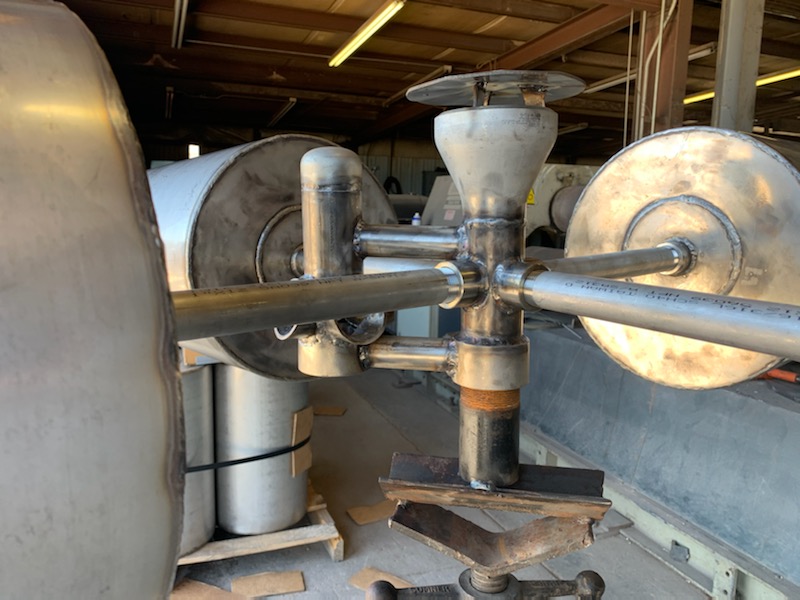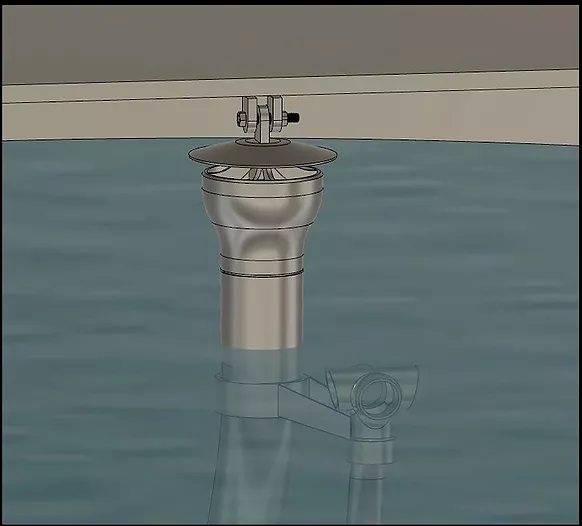
The Xtreme Tank Tool
“One Patented Tool – Many Functions”
Solve RVP Issues
The Patented Xtreme Tank Tool solves RVP (Reid Vapor Pressure) issues. The XTT captures the full spectrum of gases from the heaviest to the lightest that traditional roof/vapor tower (gas boot) collection do not collect.
Capturing all gases a few inches above the oil level, taking them out of the tank, measurably lowers RVP.
Handling carbon capture in the “Flash Zone” (where the natural distillation process occurs), accomplishes complete carbon capture.
The XTT tool captures the complete spectrum of gases. A pressure transmitter reads in the “flash zone”, the most volatile area in the tank, for a more direct interaction between VRU and in-tank operation with greater reliability and fewer system upsets or energy wasted on gas recirculation.
Compared to systems pulling against gravity, from the roof of a tank or the top of a vapor tower, the XTT Tool proves gains of up to 18% volume.
The tool takes pressure measurements in the flash zone and removes emissions as they occur in the “Flash Zone” of the tank.
Detect & Extinguish Tank Fires
This same patented technology, because of where it sits in the “Flash Zone” of the tank, extinguishes tank fires in seconds. This is done automatically using an infrared camera to detect fire.
If lightning, static, arson or a mechanical failure cause a fire, the camera will detect this, and cause a programmed release of self-stored fire foam. The fire foam is released in the tank covering the surface area rapidly. The foam enters the tank internally and is placed in the exact correct spot a few inches above the oil, extinguishing the fire.
The Xtreme Tank Technology tool changes the tank’s total atmosphere from flammable to inert. For periods of maintenance or for approaching storms, we can release nitrogen from the tool in the flash zone a few inches above the oil and purge the tank, changing the atmosphere of the tank.
Aside from aiding total carbon capture, the tool is placed perfectly for use in tank fire extinguishing. The tool may be considered a type one fire tool as there is zero splash when fire foam is released. Every gallon sent to the tank ends up inside the tank with no loss from wind carrying fire foam away.
The fire foam never travels through the flame’s temperature like it would in foam chambers. The fire foam will be 100% efficient upon arrival at the release point and be un-distorted by fire like it might be with other types of suppression systems placed directly in the fire.
When a tank catches fire, fire detector observes heat and/or flame, sending a signal to a solenoid that opens a valve of stored Compressed Air Foam (CAF) systems. The foam is pneumatically pushed with 450 pounds of nitrogen pressure, sending the fire foam internally inside the tank and releasing the fire foam directly above the tank’s liquid.
If on a fixed roof tank, fire foam is released in a 360 degree pattern, 6” above the hydrocarbon level in the tank.
In floating roof tanks, fire foam is released in the sealed area of the tank, on the underside of the roof thus enabling it to protect the tank seals as well. (Conventional fire suppression system designs inject foam above the roof, making them much less effective). XTT’s injection locations provides protection of seal integrity which means the system mitigates further flame propagation beyond the seal, further mitigating flame propagation.
This XTT tool position in floating roof applications also reduces chances of sinking a floating roof. The tool separates fuel from flame in addition to cooling the space, assisted by fire foam where it is needed most.
In a larger dia. tank, the tool’s carbon capture design uses eight XTT tools to capture vapors under the tank’s floating roof on the outside diameter in the vapor space under the roof. When a tank fire occurs, the eight tools are designed to fill with fire foam, releasing inside the tank’s sealed area.
A typical 4” XTT tool will handle ~2,500 USGPM of fire foam mix for a total flow of 20,000 GPM of finished fire foam. We can provide a video of a fiberglass tank that’s burning gasoline and diesel. This tank fire extinguishing test uses 60-80 GPM of finished fire foam and is using a 1” red industrial hose that can be seen in the video connected to the outside of the tank.
Wind does not carry fire foam away from the tank fire as it is inside the tank. The complete volume of fire foam sent up is directed for maxiumum effect. This contrasts with situations in which the roof is not yet, or only partially blown from tanks where fire departments cannot extinguish tank fires.
Once the XTT tool is installed, the fire department is no longer required to drive close to burning tanks. Instead, teams can extinguish a tank fire from a safe distance. The pipe can be manifolded a safe distance from the tanks and the firemen use this line to inject the fire foam to release it internally.
Larger and Floating Roof Tanks

- The patented XTT tool removes vapour underneath a floating roof tank.
- Most floating roofs have vapour disengaging space, as roofs typically do not sit directly on the oil. If your FLIR data shows there are tank emissions, we have a retrofit solution that removes gas before it escapes from the floating roof seal.
- We place fire foam under the floating roof to separate fuel from flame.
- We protect tank seals by applying foam directly to the seal, mitigating fire damage and inevitable breach of the seal by flame in conventional installations.
- The XTT system collects gas before volume and pressure get a chance to build, minimizing chances of roof seal leaks, mitigating outcomes and downtime.
- Atmospheric venting can be completely stopped.
Water Disposal
Saltwater disposal systems are known for building a static charge in facilities. Much of this is due to use of materials which build up static charges, such as Fiberglass Reinforced Plastic (FRP or “fiberglass tanks”). Water builds 5-1/2 times more static than crude oil or finished product. XTT tools electrically ground the liquids in the tank. The tool is 316 stainless steel and runs the full length of the tank liquid levels.
XTT’s skimmer constantly removes all oils from the top level. XTT eliminates the need for a vacuum truck to pull the oil from the tank’s top. Once the oils are removed, the emissions of gas deplete, and the vapor line can inject nitrogen or blanket gas. The tank benefits from a constant nitrogen / gas purge, keeping oxygen and any menial gases from accumulating and rendering the atmosphere inside the tank at safe levels. Hydrocarbons is removed, placing saltwater disposal in the perfect condition to handle mechanical, static or lightning situations that can occur.
